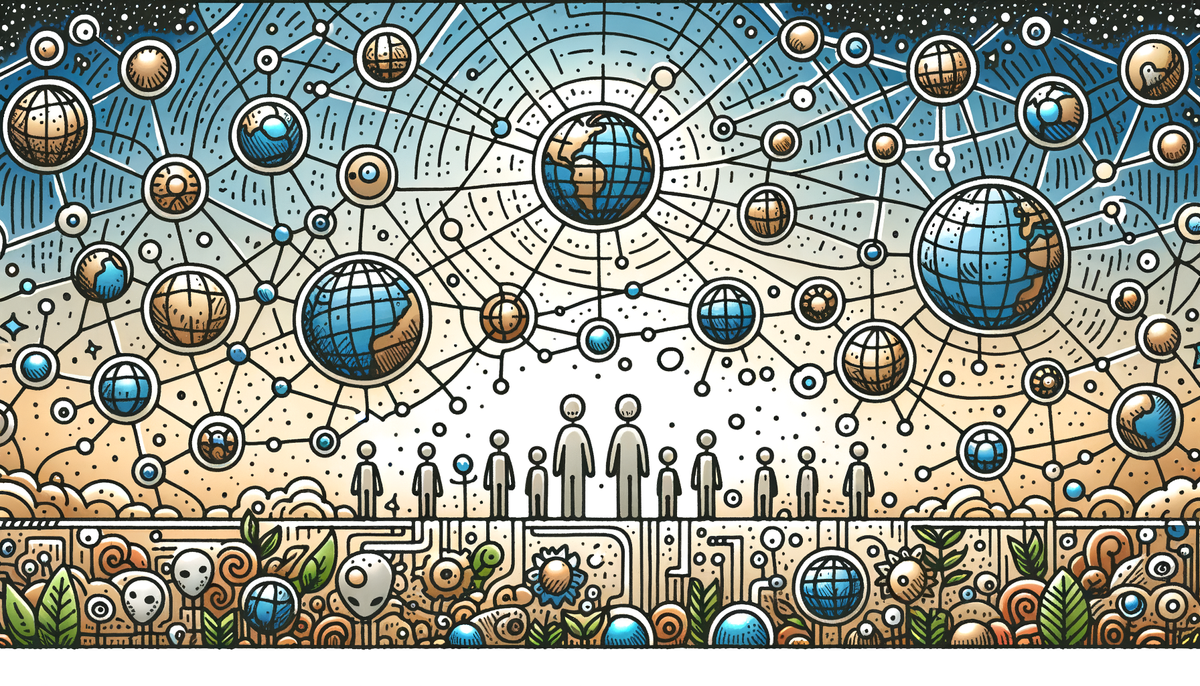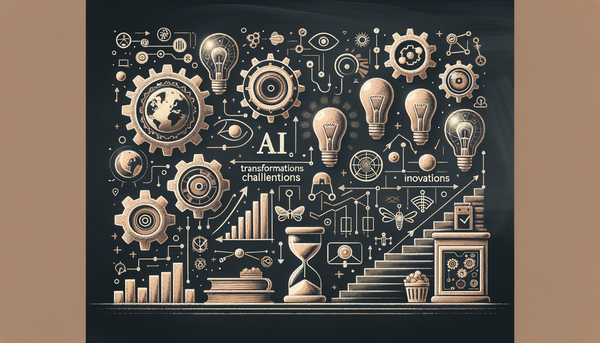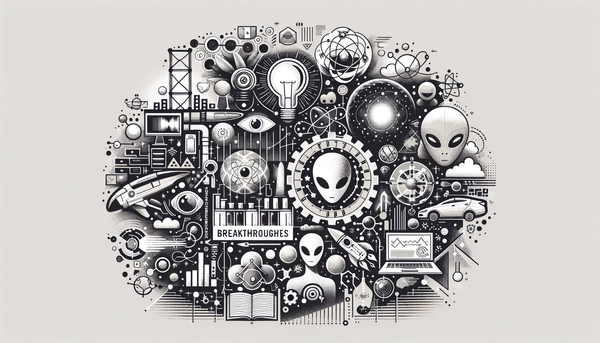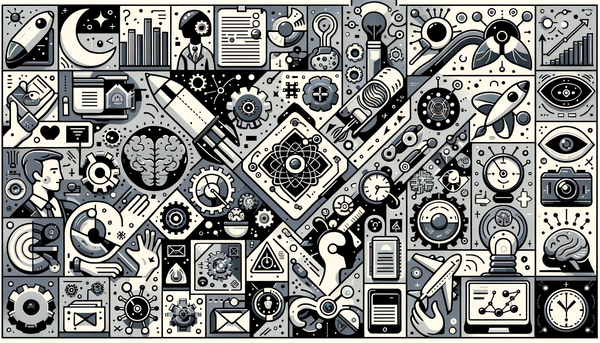Congress Tackles the AI Frontier

This in-depth analysis explores how Congress recently undertook a comprehensive crash course in the dual-edged world of artificial intelligence, where groundbreaking benefits are weighed against significant perils. College students and tech innovators showcased AI applications—from countering deepfakes to leveraging micro-expression analysis for health monitoring—highlighting the urgent need for informed regulatory frameworks. Alongside these demonstrations, the session placed AI at the crossroads of innovative opportunity and ethical dilemma, setting the stage for further discussions on industry regulations and societal impacts.
The Dual Nature of AI: Promise, Peril, and Policy in Congress's New Reality
Across multiple media platforms including Live 5 News, WLBT, WRDW, WIS News 10, Fox 10 News, WSAZ, and WAFF, an unprecedented session on Capitol Hill brought to light the transformative potential and inherent risks associated with artificial intelligence (AI). Far from a dry briefing, Congress was treated to a vivid exhibition of technological innovation, featuring demonstrations by college students and tech enthusiasts who showcased how AI is shifting paradigms in areas ranging from media manipulation to healthcare. While AI’s promise for enhanced efficiency, better diagnostics, and streamlined business processes is undeniable, the same technology harbors potent challenges, including ethical dilemmas, data privacy concerns, and even job displacement.
Demystifying AI: From Innovation to Regulation
It was a day of clarifying debates, as lawmakers were presented with a clear picture of how AI has stealthily infiltrated daily life. The session underscored that AI is not merely a futuristic concept but a current, indispensable force. According to insights shared by several outlets, college students from institutions like Dakota State University and Notre Dame took center stage to demonstrate technologies that are already weaving themselves into the fabric of daily existence.
One of the standout innovations came from Dakota State University’s Ethan Price, who showcased a system designed to combat deepfakes—a phenomenon where images and voices are convincingly manipulated to create false narratives. Price’s exhibit exemplified the delicate balance required when employing AI in a world where misinformation is a constant concern. Deepfakes have emerged as a particularly vexing challenge; while the underlying technology promises enhancements in visual effects and personal communication, it also opens up avenues for fraud, defamation, and a general breakdown of public trust.
In a similarly compelling demonstration, Notre Dame’s Colton Crum introduced an AI-powered camera capable of detecting heart rates by analyzing subtle facial micro-expressions. This breakthrough technology not only heralds new dimensions in non-invasive health monitoring but also raises important questions about the extent to which biometric data should be captured and scrutinized. As one attendee humorously noted, while the technology may indeed compliment the reporters’ fitness levels, it serves as a reminder that even the most benign of innovations comes with its own set of privacy and ethical complications.
Balancing Innovation and Ethical Responsibilities
Underlying these demonstrations is the complex interplay between technological innovation and regulatory oversight. Congress’s recent encounter with AI’s dual nature is part of a broader national dialogue. Lawmakers are increasingly aware that while AI can drive substantial economic growth and societal benefits, without careful regulation, it might also exacerbate issues like data breaches, privacy violations, and employment instability.
"AI is a tool, not a replacement for human intelligence." – Stephen Hawking
This quote by Stephen Hawking encapsulates the essential perspective needed when approaching AI regulation. While embracing AI's capabilities, it remains imperative to harness human judgment to guide its application responsibly. The session not only focused on the technology’s technical merits but also encouraged legislative bodies to acknowledge and address the ethical dilemmas it poses—from the potential misuse of personal data to the challenges of preventing discriminatory outcomes in AI models.
A critical takeaway from the discussions was the need for comprehensive regulatory frameworks that do not stifle innovation. As AI continues to evolve at a breakneck pace, regulators are challenged to build standards that are flexible yet robust, ensuring that societal interests remain at the forefront of technological progress. For more detailed insights into regulatory approaches, you might explore our earlier analysis on AI Updates: Regulation, Developments, Challenges, and Future Implications.
Practical Applications and Societal Impact
Beyond the theoretical aspects of regulation, the live demonstrations provided vivid examples of AI’s practical applications. For instance, the work of Ethan Price against deepfakes serves as a timely illustration of AI’s role in securing digital integrity. In today’s media environment, deepfakes can be weaponized to distort public perception, manipulate political narratives, or even compromise national security. By developing countermeasures, tech innovators are not merely solving isolated technical problems—they are fortifying the very foundations of information accuracy and trust.
Similarly, Colton Crum’s AI camera that detects heart rates through micro-expressions symbolizes the fusion of technology with human health. Imagine a future where non-invasive AI diagnostics become a standard part of everyday healthcare. From remote patient monitoring to early detection of cardiac anomalies, such innovations could radically transform the industry. However, there are inherent risks associated with the collection and processing of sensitive biometric data. As critics warn, the more granular the data, the higher the stakes when it comes to privacy breaches.
While the congressional session skillfully blended discussions of opportunity with cautionary tales, it also highlighted how pervasive AI has become, seamlessly integrating into sectors that range from healthcare to agriculture. The interplay between these sectors suggests that a holistic, interdisciplinary approach is essential in formulating policies that do not operate in a silo. For instance, in our post on Congressional Insights on AI and Major Industry Moves, we looked at how AI is revolutionizing various industries and the corresponding shifts in economic strategy.
The Broader Media Landscape and Policy Implications
While AI news dominated the congressional briefing, the event was intertwined with broader societal headlines that illustrate the multifaceted nature of today’s news cycle. Simultaneously, other topics such as the controversial TikTok debut of Casey Anthony, school district debates over sensitive classroom content, and even historical commemorations in South Carolina were making headlines. This eclectic mix reminds us that AI, while a focal point, is part of a larger mosaic of technological and societal change.
The varied topics reported by outlets like WLBT and Fox 10 News point to an era where technological advancement is intersecting with many elements of daily life. The excitement of technological breakthroughs is often tempered with caution, especially when new regulatory or governance measures are required to manage these innovations responsibly. In the face of rapidly evolving technology, the role of informed regulation—encompassing not just legislative action but also collaborative input from academia, industry, and civic society—is more critical than ever.
The congressional session deliberately focused on creating a dialogue that extended beyond the walls of Capitol Hill. It emphasized that understanding AI requires insights from multiple perspectives—technical, ethical, legal, and social. As Congress grapples with the expectations of innovation while attempting to preempt potential risks, it sets the stage for a future in which legislation is informed by a balanced understanding of technology’s benefits and challenges.
Learning from the Past to Shape the Future
History is replete with examples of transformative technologies that necessitated new forms of governance. The printing press, the industrial revolution, and the advent of the internet each demanded unique regulatory responses. In many ways, we are witnessing a similar moment with AI. The challenge now is to ensure that AI’s implementation is guided by both the lessons of the past and the demands of modern society.
One striking point that emerged during the congressional demonstrations was the concept of proactive governance. Rather than allowing technology to run unchecked, lawmakers are advised to anticipate potential issues and create flexible policies that adapt alongside AI’s evolution. This concept aligns with the growing body of research suggesting that a well-regulated environment can foster innovation while safeguarding societal interests. According to recent studies published in various tech policy papers, effective regulation can transform potential crises into opportunities for growth—provided that it is implemented with foresight and collaboration.
Reflecting on these challenges, it is useful to consider a well-known adage: “Forewarned is forearmed.” This perspective is especially relevant when evaluating the current state of AI. By understanding both the potential and the pitfalls, policymakers can design mechanisms that not only stimulate economic and technological progress but also protect citizens from potential harms.
Cross-Sector and Cross-Institutional Collaborations
The session’s emphasis on student-led demonstrations underscores the importance of cross-sector collaboration. Educational institutions, research centers, private companies, and government agencies must work together to foster an environment where AI can flourish responsibly. When academia and industry collaborate, the resulting innovations can be both groundbreaking and socially beneficial.
Furthermore, combining practical demonstrations with policy discussions creates a holistic view of how technology is developed and applied. For example, initiatives by organizations like the Center for AI Policy, which orchestrated much of the congressional event, highlight how strategic partnerships can streamline the interface between technological progress and policymaking. Institutions across the country have a shared responsibility to not only innovate but to ensure that their pursuits align with ethical standards and public welfare mandates.
This multi-stakeholder approach is echoed in global research initiatives and reports by international bodies focused on digital ethics and AI governance. By integrating diverse viewpoints and expertise, policymakers can craft regulations that are both effective and forward-thinking. For more in-depth analysis on this cross-sector approach, check out our extended coverage in Insights Into AI Challenges, Investments, and Societal Implications.
Pragmatic Insights and Future Directions
It might be easy to be swept up in the glamour of futuristic technology, but a seasoned observer would urge caution. The demonstrations at Congress served as a sobering reminder that every piece of innovative technology comes with challenges that must be addressed through pragmatic policymaking and ethical stewardship. Legislators are charged with the responsibility of balancing transformative innovation with the need to mitigate risks—an endeavor that requires ongoing education, dialogue, and a willingness to adapt.
As we look to the future, several trends are poised to shape the landscape of AI. Enhanced learning algorithms, greater integration of AI in everyday applications, and a growing focus on securing digital ecosystems are just a few. The discourse initiated by Congress is only the beginning of a much larger conversation about what responsible AI implementation will look like in an increasingly digital world.
Additionally, emerging technologies like blockchain, which can offer secure data management, and advances in quantum computing, might eventually interface with AI to address computational limitations and privacy concerns. These convergences may open new pathways for innovation but will also necessitate a more robust and coordinated regulatory approach. It is in this rapidly shifting environment that the collective wisdom of experts, ranging from tech innovators to legal scholars, will be critical to ensuring that AI advances in a manner that benefits society at large.
Humanizing the Dialogue Around AI
A striking aspect of the congressional session was the humanization of what is often seen as a purely technical subject. Through the participation of students and live demonstrations, AI was presented not just as an assemblage of algorithms and data, but as a technology with tangible impacts on people’s lives. Whether it's a camera that can detect micro-expressions to monitor health or a system designed to protect against deepfakes, every innovation has a human dimension that must be acknowledged.
Occasionally, a humorous interlude or a personal anecdote can remind us that AI, for all its complexity, is ultimately a tool created by and for human beings. As one of our favorite quotes from the annals of AI commentary reminds us, “Even a cat has things it can do that AI cannot,” a reflection by Fei-Fei Li that underscores the irreplaceable value of human creativity and intuition.
This human-centered approach to technology suggests that the future of AI should not be about replacing human intelligence, but rather augmenting it. It should be viewed as a complement to human ingenuity, working in tandem with human decision-making rather than supplanting it entirely.
Concluding Thoughts on the Congressional Crash Course
The recent congressional session provided more than just a technical rundown of AI advancements—it sparked a multi-dimensional dialogue about the interplay between innovation, ethics, and policy. The detailed demonstrations by college students and innovators reminded lawmakers that while AI holds the potential to dramatically transform our world, it is accompanied by equally significant responsibilities.
As legislators and experts continue to navigate these complex waters, the importance of informed and proactive regulation cannot be overstated. Efforts to create flexible yet robust policies will determine whether we harness AI for benevolent progress or allow unchecked technological growth to pose unforeseen risks. The session served as a crucial signal that, moving forward, knowledge and regulation must march hand in hand.
Looking ahead, the integration of AI into virtually every aspect of society calls for continuous dialogue and learning. For those interested in deepening their understanding of the broader implications of AI in various industries, our repository of insights—including pieces like Anthropic Warns White House: Act Now on AI Security or Face Serious Risks—offers rich resources for further exploration.
Further Readings
For additional perspectives and detailed analyses on the evolving AI landscape, consider exploring these related articles:
- Congressional Insights on AI and Major Industry Moves
- Insights Into AI Challenges, Investments, and Societal Implications
- AI Updates: Regulation, Developments, Challenges and Future Implications
- Anthropic AI Security Warning: Industry Updates
As our understanding of AI deepens and its applications spread, it remains clear that a proactive, informed approach to governance and technical innovation is the key to a balanced digital future.
In conclusion, Congress's crash course in the dangers and benefits of AI stands as a landmark moment. It captured not only the technical marvels of today but also the pressing questions that will mold the trajectory of AI tomorrow. Whether it is safeguarding democratic institutions from the dangers of deepfakes or leveraging cutting-edge health technology for the greater good, the imperative remains the same: to ensure that as we rapidly advance into an AI-driven future, ethical considerations and regulatory oversight are never left behind.
The conversation has only just begun—and with each new breakthrough, from innovative countermeasures to novel applications in human health, the dialogue on AI’s risks and rewards will continue to shape the policies that govern its evolution.
Let us embrace this moment as a reminder that progress, when coupled with prudent oversight, has the power to transform challenges into opportunities, ensuring that technology serves as a bridge between a tech-driven future and a society grounded in human values.




